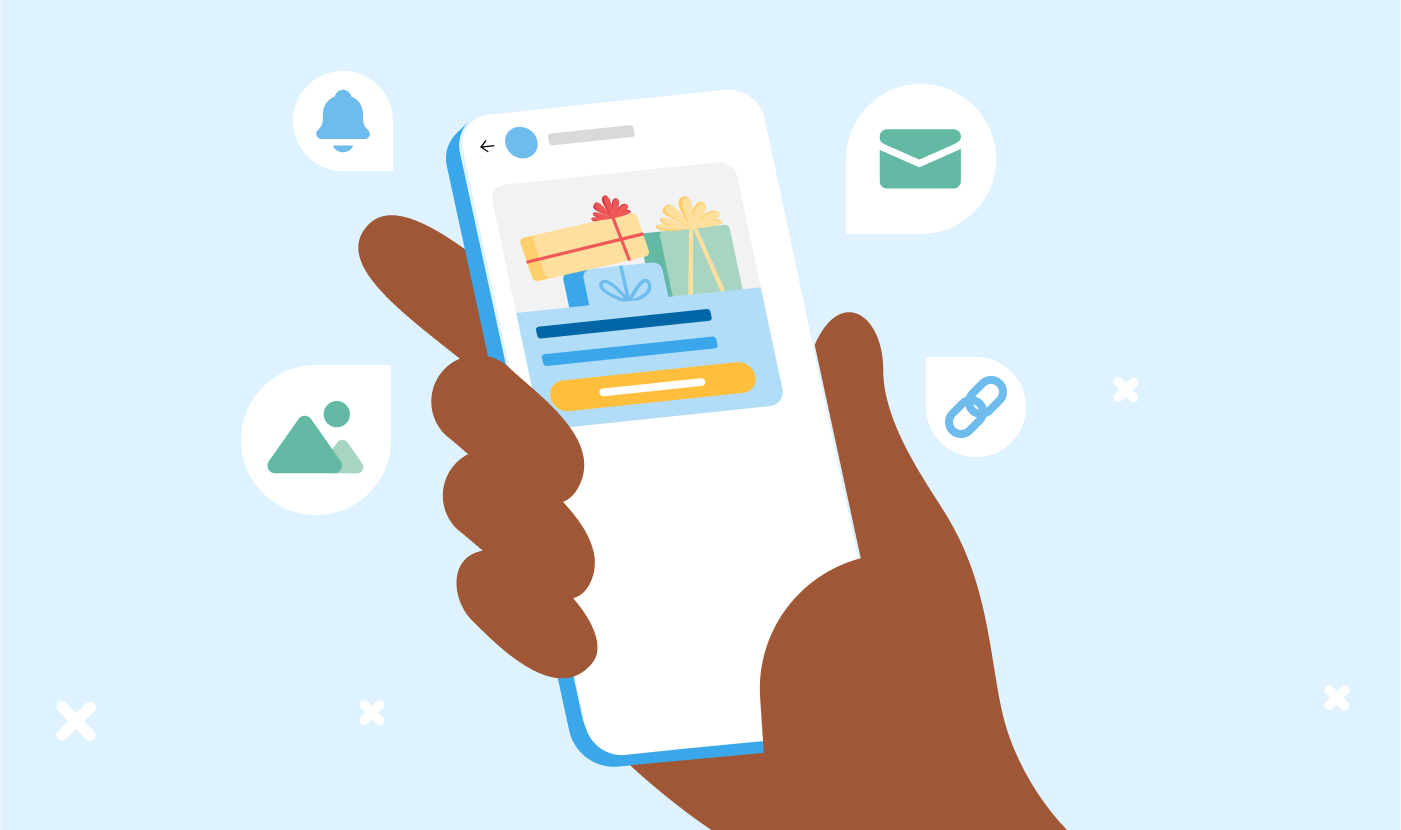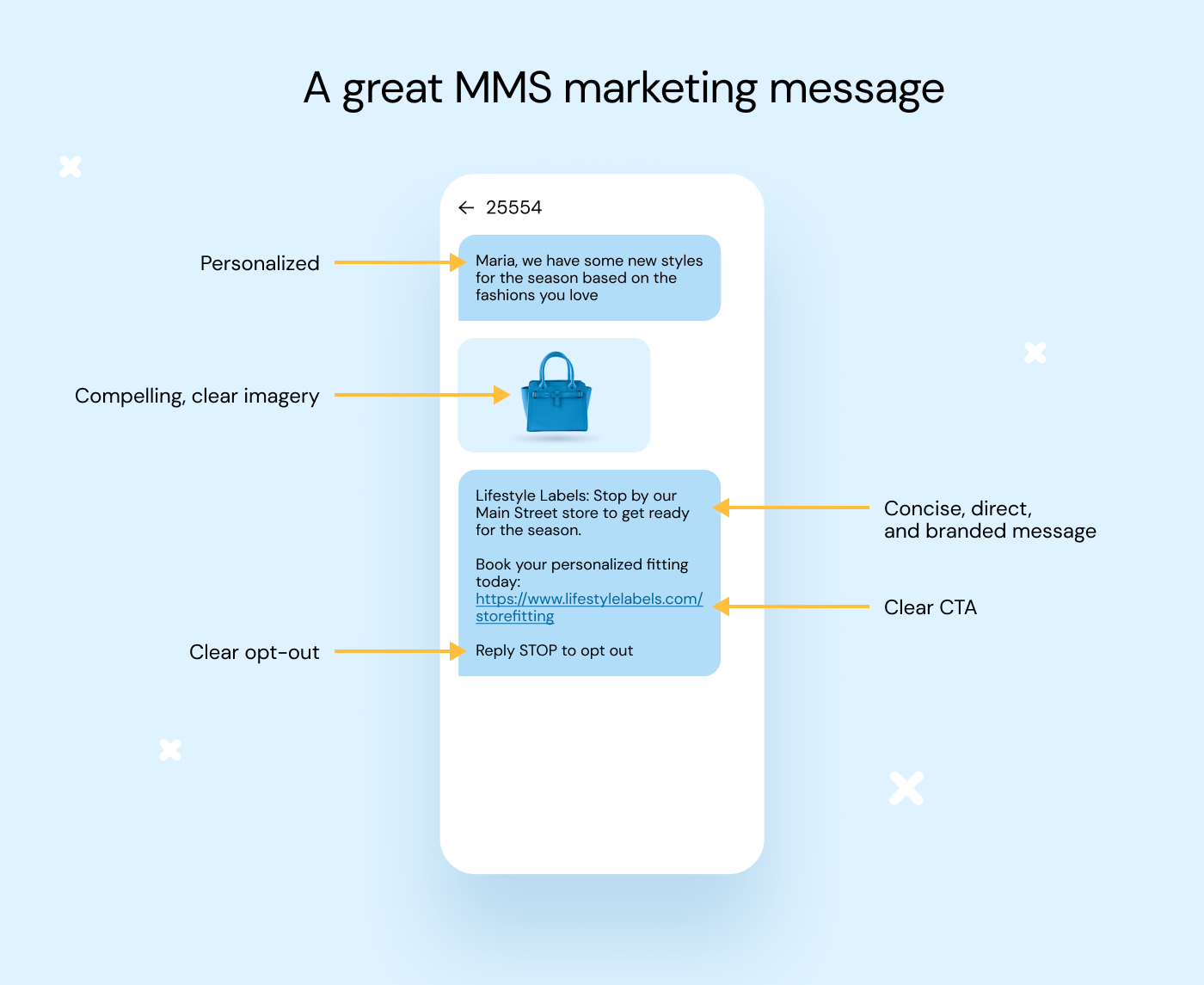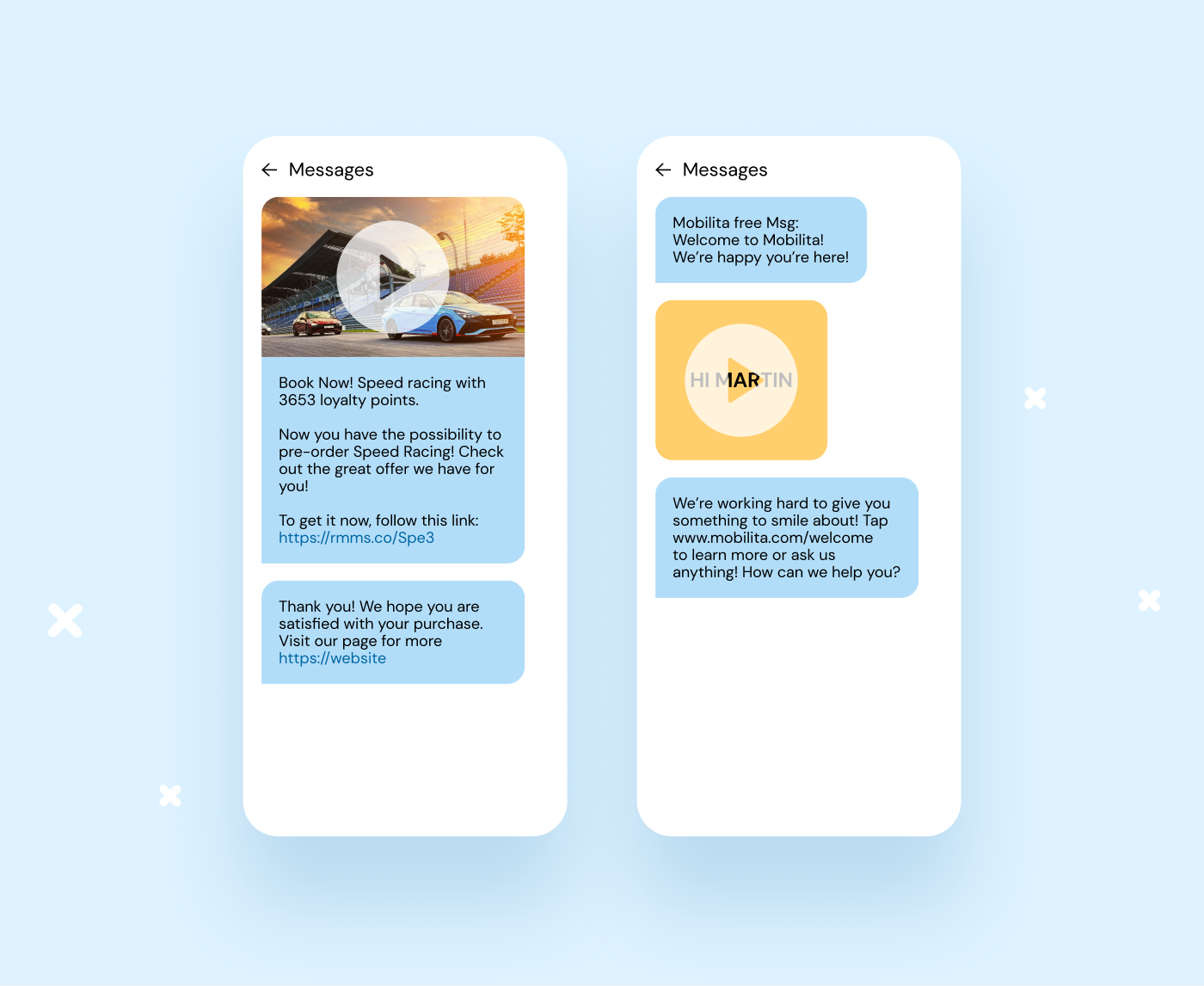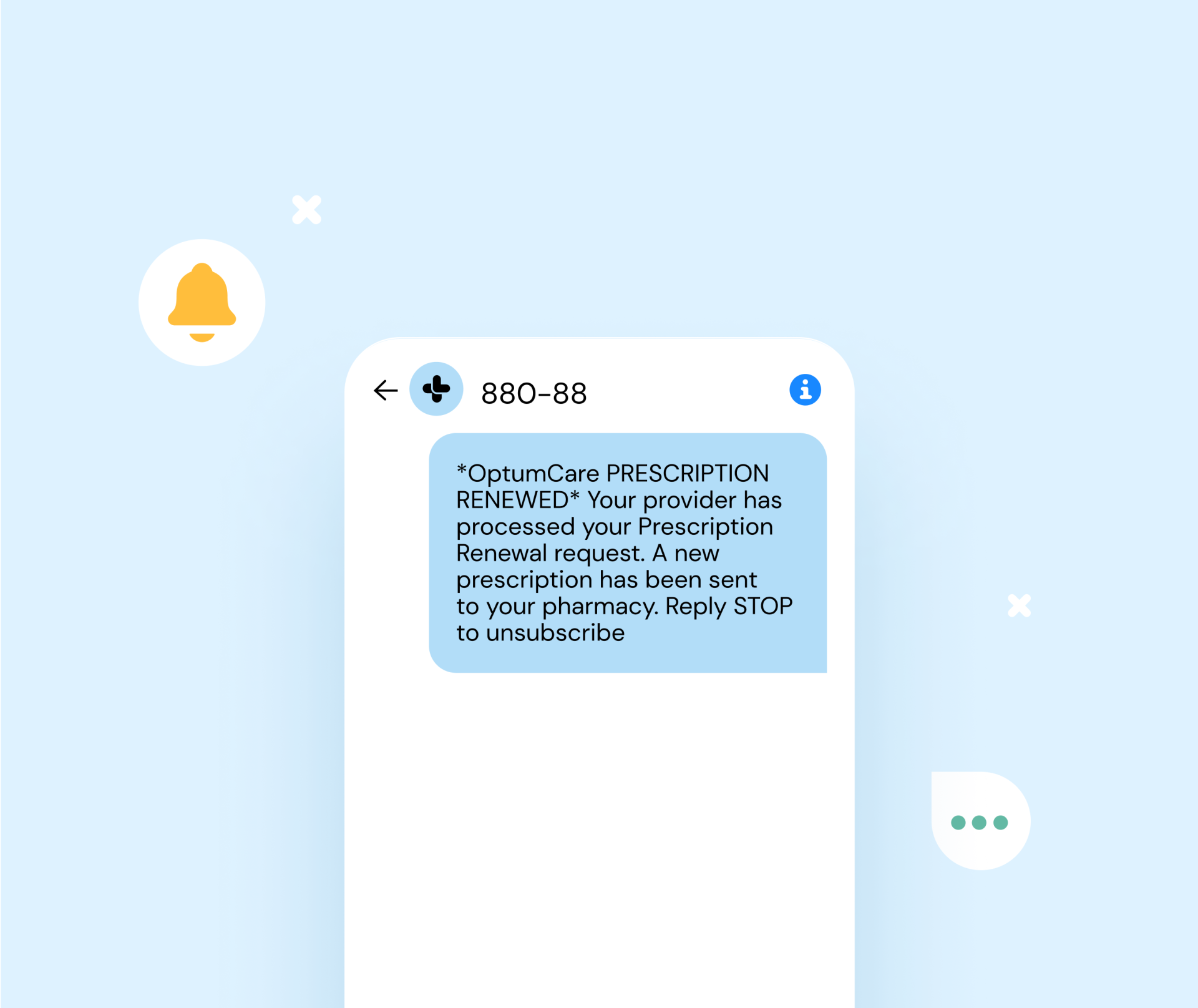Products
What is MMS marketing? Benefits and how to get started

Products

You’ve no doubt heard a lot about SMS marketing and may even be using it well. But what is MMS marketing, and how can it complement your SMS marketing efforts?
MMS refers to “multimedia messaging service,” as opposed to the “short messaging service” of SMS. As the name implies, MMS campaigns can include more than just text.
They can also include video, audio, photos, graphics, and GIFs.
Text messaging was one of the earliest forms of digital communication once cell phones hit the scene, way back when your grandparents were… already your grandparents. Actually, it wasn’t very long ago, not even 30 years.
But with text messaging available and email already establishing itself at the time, senders wanted the option to include attachments with their text messages. MMS was created for this purpose, so it uses the same basic technology – just larger file sizes that take more effort to transmit.
It wasn’t long before the value of sending MMS messages became clear. Marketers could use the power of visuals and audio to enhance their marketing messages. Today, MMS text marketing continues to be an effective method of engaging and converting subscribers and customers.
MMS marketing refers to the use of multimedia message service (MMS) technology to send multimedia content, including graphics, audio, video, animations, and other visual elements, to mobile devices.
In addition to text and call to action (CTA) links, you can enhance your messages with visuals that will get attention, increase brand recall, and motivate a response.
Listen to Lodema Steinbach, VP of Product and Carrier Relationships at Sinch, discuss how MMS marketing can help motivate a response from customers.
Basically, MMS can do everything SMS can do, but louder, brighter, and bolder.
With SMS marketing, you’re limited to 160 characters per message. That requires some serious editing skills and the art of brevity. With MMS, you have much more room to express your message, with between 1,600 and 5,000 characters (depending on your provider), in addition to whatever media files you choose to add. As for the sizes of those files, your video and audio messages can be up to 30 seconds long.
MMS marketing generally requires more data, so providers will generally charge more for using MMS to communicate with subscribers.
Still unclear? Here’s a quick table comparing the capabilities of SMS and MMS marketing messages:
|
MMS marketing |
SMS marketing | |
|
Character limits |
5,000 characters (with transcoding) |
160 characters |
|
Message formats |
Text, video, audio, images, animations, PDFs |
Text with links |
|
Costs |
Higher |
Lower |
|
Response rates |
Better |
Good |
|
CTA buttons? |
Yes |
No |
|
Customized images? |
Yes |
No |
|
Reach |
All mobile users in supported countries (Canada, USA, and Australia) |
All mobile users (7.3 billion people) |
An MMS marketing message might not get delivered is if the file size is too large. That’s why you want to make sure you don’t include photos or videos that are too big or of unnecessarily high quality. Compress your multimedia files, and don’t try to come right up against the limits.
Yes, you can do 30 seconds of video, but maybe opt for 25 or less just to be safe. For images, keep the sizes under 300 KB.
Generally, MMS messages will cost more to send than SMS messages due to the larger amounts of data being transmitted. However, specifics will depend on your messaging provider.
So when deciding on whether to add MMS to your marketing strategy, you have to weigh the benefits against the costs. For instance, Adobe has found that MMS marketing gets 20% higher opt-in rates than SMS. So, with higher engagement and more click-throughs, you’re likely to close more sales and earn more revenue.
Will that be enough to justify the higher costs? You’ll have to try it and study your data to know for sure.
Curious to know the benefits of MMS marketing? Let’s look at the beneficial outcomes of using MMS as part of your marketing strategy.
Visuals are powerful in marketing campaigns, and this holds true for MMS marketing as well. Take this A/B test campaign done for a restaurant as an example. Half the messages were sent via SMS, meaning they had text only, and the other half was sent via MMS and included a photo of an item from their menu. The MMS campaign earned a 5% CTR, compared to 3% for the SMS campaign. Notably, 5% was the highest CTR this business had ever achieved.
Let’s break that down a little more to see how much better a 5% click-through-rate is compared to a 3% one. In a list with 10,000 subscribers, that’s 500 clicks compared to 300, which is a significant improvement in engagement!
This is just one example – there are so many more tests you could run, like seeing the effect of video, CTA buttons, graphics, or personalized photos on engagement rates. We expect that you’d see engagement rise substantially, because visuals are such a powerful part of MMS marketing.
Storytelling with text alone can be a serious challenge. With visuals and audio, you can greatly enhance whatever narrative you’re attempting to tell. And it’s not just the visuals because you have many more text characters to work with, too.
That means you can explore benefits, outcomes, challenges, the pain and problems your products and services address, and much more. By adding MMS as a marketing channel, you have a better chance of evoking real emotions.
Most brands have distinct images, colors, and logos. With MMS, you can showcase these elements, ensuring immediate recognition among your subscribers so there’s no ambiguity about the sender of the message.
Better brand recognition also improves security and trust because your subscribers will feel more confident in engaging with your MMS content, without worrying what will happen if they click the links.
And best of all, brand recognition carries forward. Each time they see your brand’s imagery, you gain a firmer foothold in their lives. They know you. With MMS, you can incrementally build up brand recall and loyalty.
As this study from Adobe found, users are eight times more likely to share an MMS marketing message than an SMS message. And this isn’t surprising, given the inherent appeal of visual content in an MMS message.
The shareability of MMS content extends beyond just images, because people also have the ability to share videos and audio messages. When your subscribers share your content with their friends and family, this acts as word-of-mouth marketing making it one of the most effective marketing strategies of all.
SMS marketing is versatile and well-suited for a number of different mobile campaigns. And while you could use MMS for many mobile campaigns as well, MMS adds a layer of versatility because it incorporates multimedia elements. In other words, the optimal approach will use a mix of SMS and MMS.
Here are six MMS campaign ideas that take full advantage of this marketing channel:
New product launches are much more effective when they feature a photo or video of the product. To truly captivate your potential customers, it’s essential you show them what you have to offer first!
Launching a new campaign? Liven it up with graphics and other multimedia assets. Create graphics to show discounts, deals, and special offers, as well as deadlines. Make your message stand out.
As with new product launches, the ability to include product photos for any promotion will be more effective than text alone. With collections in an MMS message, you can include images of a digital catalog that links to the same landing page as your text link in a promotional SMS marketing message. The image will compel more engagement.
Graphics representing coupons feel more ‘real’ than just text describing the coupon. Both are effective forms of mobile marketing, but the MMS version should get a higher response.
Holidays are all about visuals. Every holiday has imagery that accompanies it, even minor ones, offering valuable marketing opportunities for specific industries. By incorporating holiday-related visuals, you’ll not only capture more attention but evoke stronger emotions. Black Friday in particular is an excellent occasion to use MMS text marketing to engage and convert more customers.
Using MMS messages to send appointment reminders, confirmations, and notifications can be a highly effective marketing strategy, especially if your business depends on automation to enhance overall efficiency.
But visual reminders will be more effective than text reminders. You can include images of a calendar, a notepad, or something more relevant to whatever your appointment is about. Simple graphics like these make your reminder that much more memorable.
If you want to realize the benefits of MMS in your text marketing, here are some tips to make sure you have optimized your campaigns for success.
This step is crucial! You can be severely penalized for sending unwanted text messages, with rules and fines being considerably more stringent than those for email marketing. You can learn about text opt-in best practices in our guide.
The more personalized and relevant your MMS messages, the better your response rates will be. Just like email, you can segment your MMS campaigns by demographics, purchase history, interests, and other factors. The good news is, sending personalized MMS messages is now easier than ever.
Just like with email marketing, you want your MMS messages to stand out. That means using a good subject line. You can be direct with subjects like “Offer expires Sunday” and “Be the first to own this.”
And you can also appeal to curiosity with subjects like “Have you seen this?” and “Something special for you.”
Content is still king. A great subject line with a message that falls flat won’t garner much response. If you’re going to create great MMS marketing campaigns, you need to have quality images, videos, graphics, and other multimedia data to make it work.
And remember, pursue emotion. Create urgency, interest, intrigue, curiosity, desire, and the fear of missing out. Remember the A/B test from earlier? It was their best campaign ever, and it got a 5% CTR. Most people don’t click, and to get them to respond, you need to evoke emotion.
Also, make sure everything is readable. Busy images that have too much going on will be hard to see on the small screens of mobile phones. Too many people in photos, too much text in charts or other graphics, and over-designed content might be hard to engage with on smartphones. Consider that when creating your MMS marketing content.
Just like in any marketing, have a call to action that is direct, clear, and easy to grasp. Whether on a button, in text, or in both, make it relevant to the content and simple to understand, like:
Graphics usually need context. Plus, while some people like visuals, others like the straightforward nature of text. With MMS, you can do both, and you should. Rarely should you send just a photo or video.
Check out this well-designed MMS message, which uses the best practices we’ve laid out so far: compelling text and graphics, personalization, a clear CTA, and clear opt-out.

Remember to watch your size limits. Keep photos and graphics under 300 KB. Keep videos short, and probably reduce the resolution. You wouldn’t want these sorts of things to cause any risk of your messages not getting delivered.
MMS is just one channel to use in your omnichannel marketing plan. Your most effective form of media isn’t MMS, or SMS, or email, or social media, or PPC, or any of the many other channels out there. It’s all of them. Or, it’s a combination of several that you do well and that are most relevant to your audience.
Our recommendation? Use MMS marketing to enhance your other efforts so your subscribers, customers, and leads are hearing from you on all the mobile channels they love to use.
Let’s look at a few examples of real MMS campaigns. These MMS examples show a few different ways to leverage the power of visuals – plus additional text – to increase response rate and grow revenue.
Sureshot’s goal is to help more businesses use MMS to reach millions of users. Sureshot worked with Sinch to create a new MMS messaging app for Oracle, because their customers were asking for it. The app empowers Oracle’s customers to send personalized MMS campaigns, like the ones below.

Now, Oracle has a better tool to offer their customers the ability to deliver more compelling mobile marketing.
GoLive helps businesses communicate using an omnichannel approach, and MMS is part of that service. Many of their clients work in the healthcare industry.
Recently, GoLive added the capability of sending appointment and prescription reminders using MMS and SMS for conversational messaging.

Now, their patients can engage in two-way dialogues with their providers and get their questions answered.
How do you get more people to attend your music festival? Tell them which performers will be there.
But how do you say which performers will be there with text messaging? With SMS, you’d have to do it in just 160 characters, which isn’t necessarily the best way to convey the exciting, emotional atmosphere of a music festival.
With MMS, the Life Is Beautiful music festival created a poster showing the lineup of performers, and sent that as a text message. Now, the hundreds of thousands of people on their list could see an alluring visual showing which artists would be performing at the concert. This led to 25% of all ticket sales happening via their MMS campaign.
Remember, MMS is one channel to use in an omnichannel customer journey. And it’s a powerful one, because it relies on visuals that will get attention and motivate response. And with far more character capacity, you have room to create a complete marketing message.
Want to learn more about MMS marketing? Download our free guide to learn how to use MMS and other conversational channels to increase engagement, enhance customer experience, and deepen customer loyalty.
If you’re ready to take the next steps towards building an omnichannel marketing strategy, let’s chat. Our team is excited to help you implement MMS marketing tactics that your customers will love!